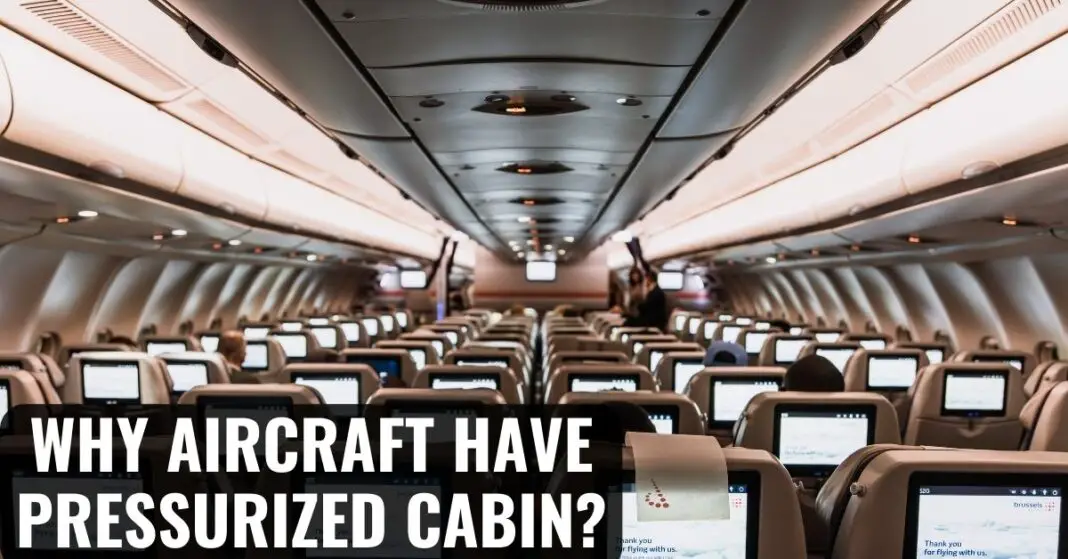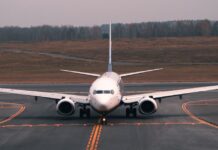Setting foot in an airplane and soaring across the continents is a feat of human ingenuity that has transformed our world into a global community. While the awe-inspiring spectacle of flight often captures our attention, it’s the unseen marvels of aircraft technology that make such journeys possible and safe – one of which is cabin pressurization.
Most passengers, comfortably settled in their seats at cruising altitudes of 35,000 feet or more, aren’t aware of the engineering marvel that is the airplane cabin pressurization system.
Table of Contents
Basics of Airplane Cabin Pressurization
Navigate through the overwhelming expanse of the sky and you step into the realm of reduced pressure levels and insufficient oxygen, a hostile environment for the human body.
The answer to survival at these hostile altitudes comes in the form of pressurized cabins in airplanes, a technological marvel that has allowed air travel to become the safe, routine activity it is today.
Reduced air pressure at high altitudes means oxygen molecules are spread further apart, resulting in less available oxygen per breath. Without enough oxygen, humans experience hypoxia, leading to dizziness, loss of consciousness, and even death. Imagine, then, the crucial role of pressurized cabins, artificially maintaining a comfortable and safe environment, mirroring conditions found near sea levels.
Pressurized cabins work by pumping in compressed air, usually bled from the engines, known as ‘bleed air.’ This air is cooled, mixed with recirculated cabin air, and vented out through a valve to regulate pressure. It’s an incessant labor of sublime engineering that keeps the cabin pressure at a comfortable, and more importantly, a safe level for passengers and crew members.
Understanding the impact of altitude on the human body gives rise to the concept of a ‘service ceiling’. An aircraft’s service ceiling is the maximum altitude at which it can fly safely and efficiently.
A critical component defining this service ceiling is the cabin pressure altitude, the altitude relative to the standard atmospheric properties. Thus, the aircraft’s structure and cabin pressurization system largely determine the service ceiling. Modern commercial aircraft typically have cabin pressure altitudes between 6,000 and 8,000 feet, even when cruising at altitudes of 35,000 feet or more.
Airplanes are not the only beneficiaries of pressurized cabin technology. Consider the pioneers of space exploration. Astronauts, in their spacecraft at altitudes even greater than those experienced by airplanes, certainly would not survive without a pressurized cabin.
The same principle also applies to deep-sea exploration, where pressures are vastly greater than on land; only here, pressure is maintained within submarine cabins to counteract the extreme pressures from the outside.
Pressurization Mechanism and Systems
Delving deeper into the technicalities, let’s comprehensively decipher the process of pressurization within an airplane’s cabin.
The wonder of pressurization initiates even before an aircraft’s ascent. The moment the aircraft’s engines start, pressurization follows, preparing the plane and its occupants for a pressure difference.
Accomplishing this remarkable function involves a key player: the aircraft’s environmental control system (ECS). The ECS maintains climate control within the aircraft, a significant part of which is ensuring apt pressurization.
Airplanes’ engines, especially the jet engines, play a pivotal role in inducing pressurization. The jets suck in massive amounts of air, part of which fuels combustion while the rest is routed to the ECS. This diverted air is labeled as ‘bleed air,’ fundamentally holding the temperature of the tropics despite being subject to freezing external conditions.
The ensuing task is moderating this high-temperature bleed air. It traverses through a web of coolers to emerge at a comfortable temperature suitable for human survival.
This conditioned air then embarks on a journey to the mixing unit, wherein it combines with re-circulated cabin air. This coalesced air later navigates through the cabin, supplying the requisite oxygen to passengers while maintaining humane conditions, irrespective of the elevations the aircraft scales.
Now, addressing the elephant in the room: how does this pressurization hold, given the aircraft’s ascending altitudes and diminishing external air pressure? The answer lies in a unit known as the ‘outflow valve.’ This valve – contrary to one’s intuition – allows air to escape from the cabin, thus balancing internal pressure.
As the aircraft soars higher, the valve incrementally closes, limiting the escape of air. Simultaneously, the inflow of compressed air continues, thereby preserving cabin pressure.
The complete regulation of this process lies in the pressurization controller’s hands. This unit governs the cabin’s ‘pressure altitude’ or the fictitious altitude that the inhabitants of the cabin ‘feel’. The pressurization controller ensures that this ‘feeling’ remains constant and comfortably below the aircraft’s actual flight altitude.
For instance, when an airplane is cruising at 35,000 feet, the pressurization controller ensures that occupants ‘feel’ as though they are at a mere 8,000 feet, where the air pressure remains tolerable for human life.
Evolution and Technological Advancements
Building on the foundational aspects of aircraft pressurization, it is essential to dive deeper into the landmark developments shaping the field today. Over the years, these improvements have not only bolstered aviation’s safety levels but have also enhanced the comfort of air travel.
A noteworthy development is the advent of proportional technology in pressurization control. An issue with traditional systems is that they manipulate the outflow valve in a fully open or fully closed manner, leading to fluctuations in cabin altitude.
However, recent technological breakthroughs allow for proportionate control, which adjusts the outflow valve more delicately, resulting in smoother transitions in cabin pressure and enhancing passenger comfort.
Another significant advancement is the wider adoption of digital technology, which has replaced analog systems. The digital pressurization controller uses sophisticated algorithms to optimize the pressure altitude based on the aircraft’s flight profile. This technology not only ensures more precise control of cabin pressure but also minimizes the workload for flight crews.
Furthermore, the integration of an aircraft’s environmental control system (ECS) with the flight management system (FMS) is an evolving trend. The FMS contains data about the aircraft’s flight path, and by connecting it with the ECS, the pressurization system can prepare in advance for changes in altitude, resulting in a more comfortable experience for passengers.
Manufacturers have also been innovating to improve the conditioning of bleed air – referred to as ‘pre-conditioned air’ (PCA). Given that this air needs to be cooled down further before it’s mixed with re-circulated cabin air, newer PCA units feature improved cooling efficiency, thereby reducing the energy consumption of the aircraft.
Lastly, the novel idea of using non-bleed systems – as seen in aircraft like the Boeing 787 Dreamliner— marks a paradigm shift. Instead of bleed air from engines, these systems use electrical power for cabin pressurization. This results in improved engine performance and contributes to the overall fuel efficiency of the aircraft.
Overall, these advancements are a testament to the relentless quest for safety and comfort in aviation. As we continue to push the boundaries of what’s possible, it is evident that the journey to ensuring optimal aircraft pressurization is dynamic, with its trajectory influenced by ever-evolving technology.
Why are plane cabins pressurized?
Pressurized cabins play a crucial role in ensuring safe and comfortable flights by supplying sufficient oxygen at high altitudes, preventing discomfort from pressure changes, and maintaining a pleasant environment through humidity regulation. This essential technology is what allows us to enjoy smooth and worry-free journeys through the skies while prioritizing our well-being.
Can a plane fly without a pressurized cabin?
Planes can fly without pressurized cabins, but this is only feasible at lower altitudes where the air is sufficiently dense for comfortable breathing. Once the altitude exceeds 10,000-14,000 feet, the sparse air poses risks such as oxygen deprivation and an increased threat of rapid decompression.
What would happen if airplane cabins weren’t pressurized?
Without pressurized cabins on airplanes, passengers and crew would face oxygen deprivation, discomfort, and breathing difficulties at higher altitudes due to the thinning air. This could lead to health risks, increased discomfort, and a higher likelihood of decompression sickness during descent.
Moreover, the absence of pressurization poses safety concerns, as it contributes to the structural integrity of the aircraft and helps maintain a consistent pressure level for a secure and comfortable flight experience. Pressurized cabins are crucial for preventing adverse health effects, ensuring passenger comfort, and maintaining the safety of the aircraft during ascent and descent.
Do planes pressurize the cabin before takeoff?
Yes, airplanes typically pressurize the cabin before takeoff. The pressurization process begins on the ground as the aircraft prepares for departure. The cabin is gradually pressurized to a level that is comfortable for passengers and crew during the ascent to cruising altitude.





